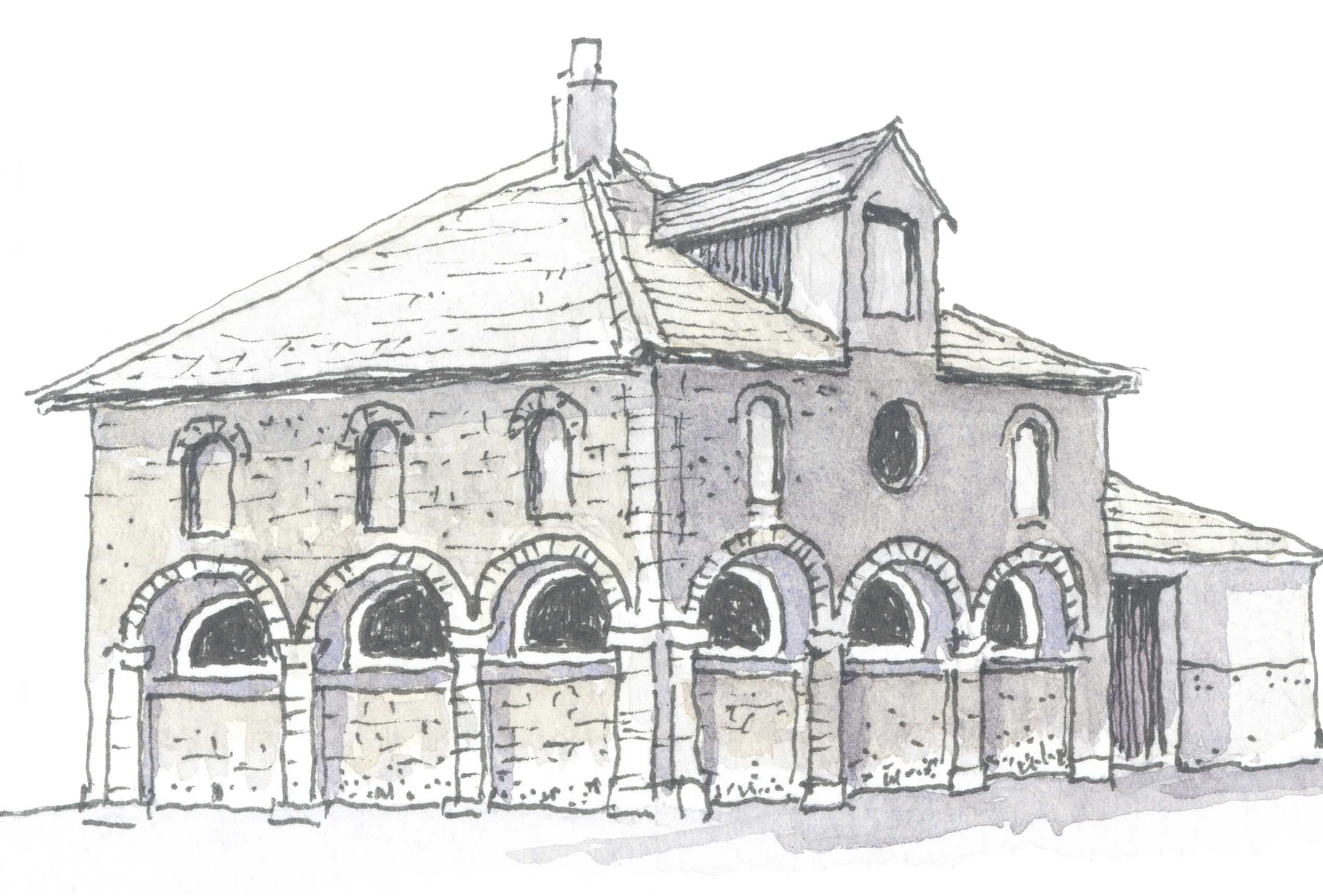The Shap Local History Society annual Social evening in the Memorial hall saw a sell out event with 50 people gathering to enjoy an evening with celebrated food historian Ivan Day who had organised and prepared a three course supper of traditional Cumbrian food. The Society Chairman Jean Jackson welcomed Mr Day who has spoken to the Society on several occasions and who lives in the village.
Mr Day explained that the starter was Potted Trout, prepared in the way that Char once was; this was a high class dish reserved for gentry; it was served with Scapple or Scrape cake – a soft oatmeal flat bread that Mr Day dubbed ‘Shapattie’; a side relish of quince and apple jelly, just took the edge off the richness. Jean Jackson had been in charge of preparing the main course of Tatie Pot, the staple of many farmhouses, traditionally made with Herdwick mutton and incorporating black pudding, this was served with braised red cabbage and pickled beetroot. The dessert course was Westmorland Sweet Pie or Shred pie – a forerunner of mince pies, there was a side helping of Westmorland sweet butter, a variation of Cumberland Rum Butter and cream or crème fraiche, a fruit salad and trifle were also on offer.
Following the meal, Mr Day gave a talk about the dishes that had been eaten and their origins. Char, a species of the salmon family that inhabit the deepest lakes was considered a delicacy, and pies had evolved as a popular method of exporting it to London, originally these would be sealed in a hard rye pastry and the voids filled with clarified butter. It was recorded that such pies would keep fresh for several weeks; and one had weighed 48 pounds. At a later date special char pie dishes were produced by potteries, decorated with painted fish, these are much sought after collectibles today. Mr Day described the scrape cake, and included images of his helpers Liz Amos and Jean Scott-Smith making them using griddles on his open range, these would be hung from a fleck or rack to dry above the fire. The mixture used for the sweet pies contained minced mutton with a lot of dried fruits, apple and spices steeped in rum on a short pastry crust; an image showed the two ladies preparing the pies in his kitchen that morning.
He spoke about old handwritten recipe books from which two of the recipes had been taken; had associations to the Atkinson family of Kirkby Thore who were early bankers, the Hutchinson’s of Penrith, with their Wordsworth connection, and finally a link to John Hodgson of Swindale and Rosgill who was educated at Bampton by the famous John Boustead and became a great scholar.
Mr Day said that his passion for historic food and how it was prepared had begun when he was a schoolboy. He runs cookery courses and has created sets for banquets in films, and historic buildings such as Osborne House. Another aspect is sugar sculpture, intricate creations using ancient moulds, these have been displayed in museums all over the world. He described the process of packing and crating the sculptures for export to the United States and America and Canada, where he has often lectured.
There was an opportunity for questions, before Mr Day was thanked for his wonderful talk by Society Secretary Liz Amos and the raffle was drawn.
The next monthly meeting will be on Monday 28th January, when a Richard Preston will Speak about Agriculture during the First World War.
